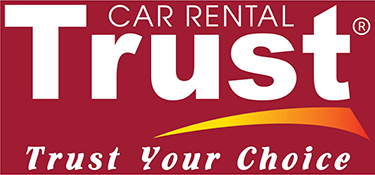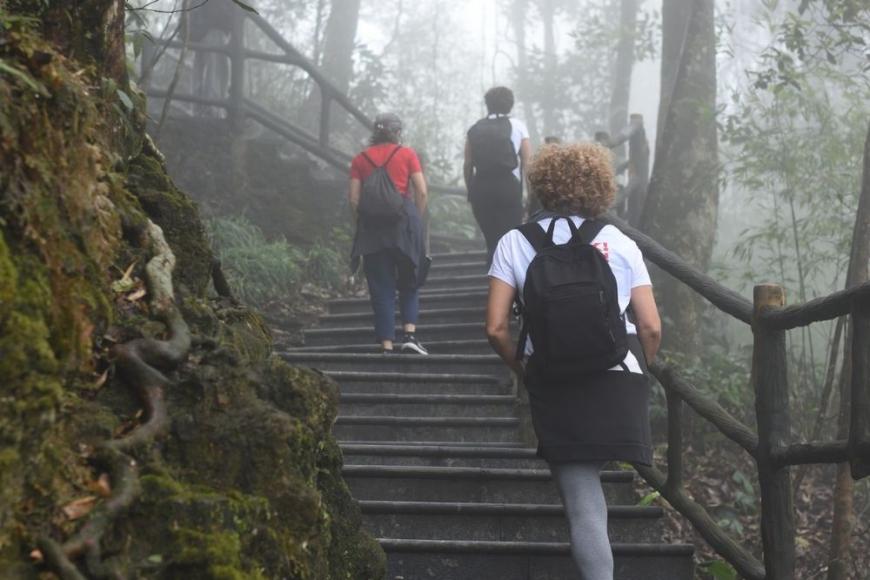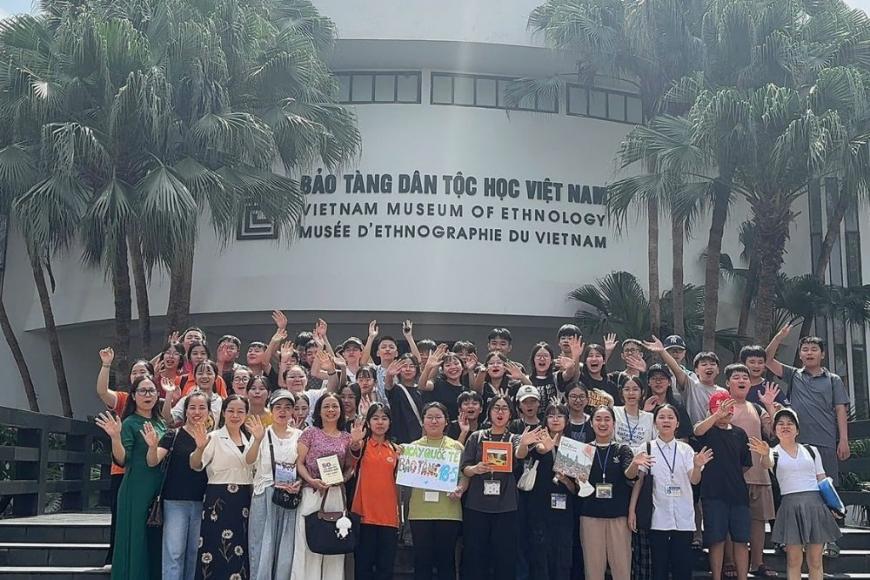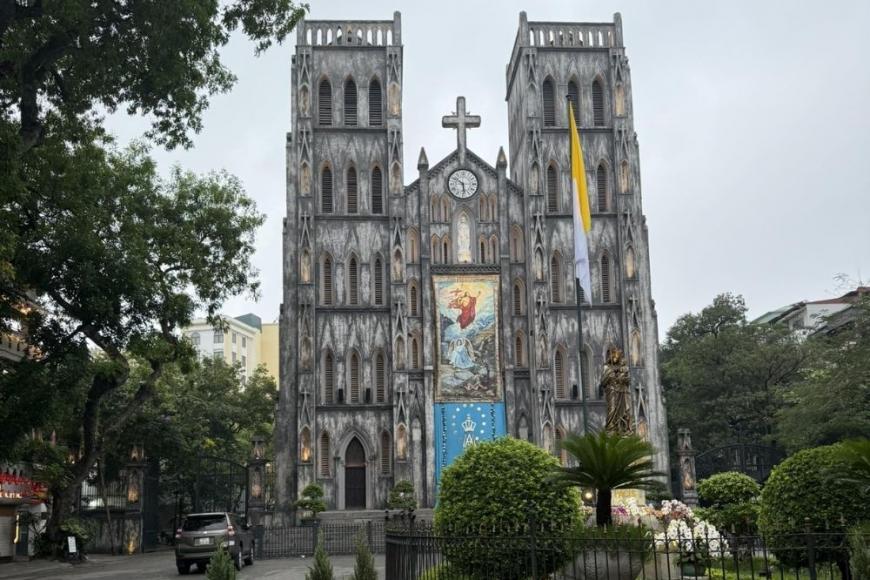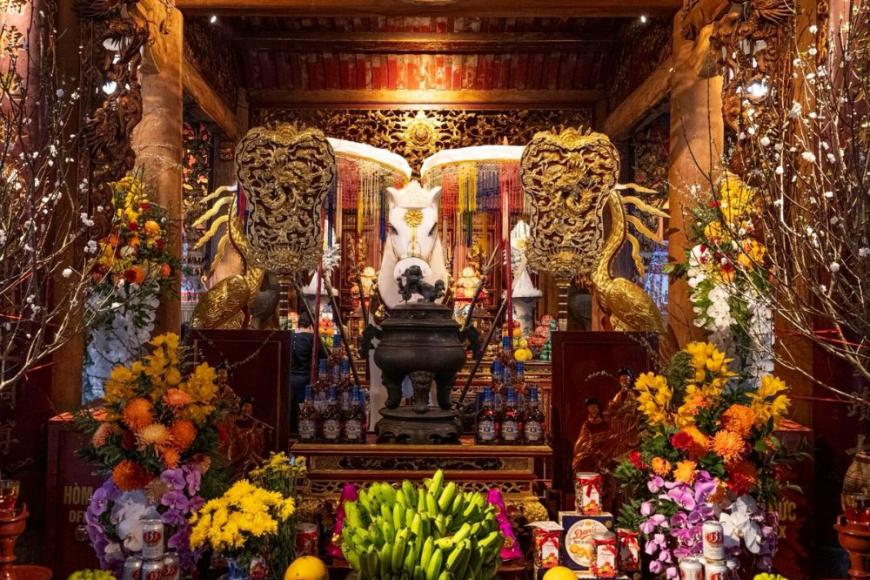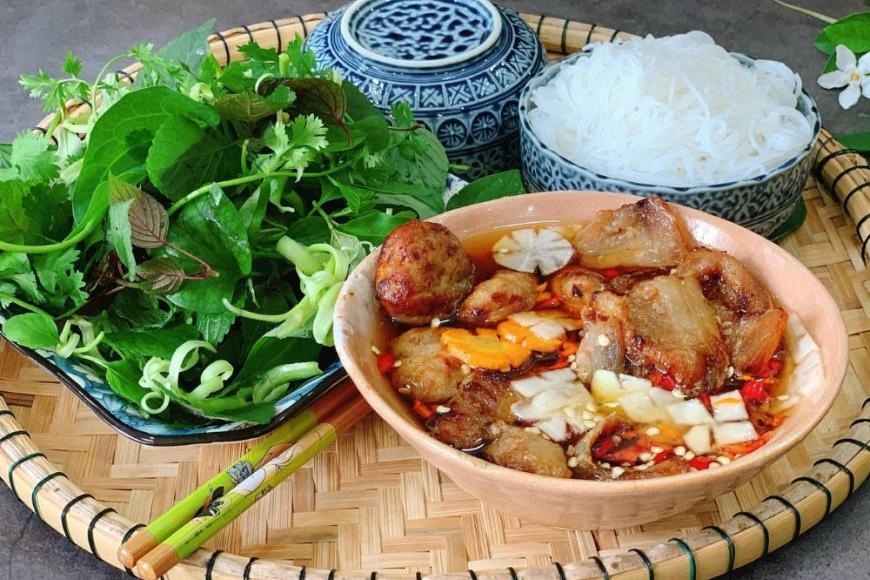- Nha Trang Travel Information
- Muine Travel Information
- Hue Travel information
- Cantho travel information
- Sapa travel information
- Ha Giang Travel Guide
- Ninh Binh Travel Information
- Quy Nhon Travel Information
- Vietnam Travel Information
- Hoian Travel Guide
- Vung Tau Travel Information
- Quang Binh Travel Information
- Phu Quoc Travel Information
- Ha Tinh Information
- Ca Mau information
- Quang Ninh Travel Information
- Tay Ninh Travel information
- Hoian travel guide
- Tien Giang travel guide
- Con Dao Travel information
- Ninh Thuan information
- Moc Chau information
- Danang Vietnam Travel Information
- Hanoi Travel Information
- Ho Chi Minh Travel Information
- Dalat Travel Information
How the Hanoi communist flirts with the capitalism?
How the Hanoi communist flirst with the local capitalism after a war time finished?
Such is the Vietnamese capital, lurching into the 21st century with the swirl of unfettered street capitalism set to the soundtrack of communist proclamations. Everywhere people are buying, selling, hawking goods and offering services, while nationalistic music and announcements play regularly in the background. Six million people live in this former colonial metropolis; add hundreds of thousands more who jammed Hanoi last fall to mark its 1,000th anniversary, and you sense that this already dizzying city is spinning into a new era.
This is not to say that traditions are endangered. The Old Quarter is arguably the epicenter for the city’s connections to its past.
Wander its crisscross of streets – with tall trees, narrow buildings, louvered windows and people’s lives spilling onto sidewalks – and you’ll discover a district known as 36 Streets, named for the craft guilds that populated the neighborhood over the centuries, mixing Vietnamese and Chinese merchants and artisans. Silk Street (Hang Gai), Silver Street (Hang Bac) and Sails Street (Hang Buom), among others, offer their crafts and other goods for tourists or locals.
The Old Quarter’s oldest building, the Bach Ma (White Horse) Temple, dates to Hanoi’s original incarnation as the imperial city of Thang Long – Soaring Dragon.
For culinary traditions, Cha Ca La Vong is a nondescript restaurant on Cha Ca Street that’s been serving up one dish for more than a century. Sit at a communal tables shared by random guests – common language not required – and forget the menu.
Waiters bring out tabletop, gas-fired stoves in which chunks of marinated, turmeric-coated whitefish are fried in oil – by patrons themselves – along with dill, chives and other greens. Dump the mixture over rice noodles, top with peanuts and wash it down with a draft beer known as bia hoi. The fish itself doesn’t deserve many superlatives, and tourists have pushed up prices, but it’s still worth the experience.
What the Vietnamese Hanoi communist flirst with the capitalism?
Pho is the dish Vietnam is best known for – a steamy broth of beef or chicken with noodles, greens, star anise and spices. It’s served up everywhere, and everyone has his or her own spice secret. Order a bowl from a sidewalk vendor, squat on a plastic stool a foot or so from the traffic, savor the broth and watch the crush of people go by. You can also sop up good soup in quieter though less interesting settings in the indoor comforts of the chain restaurant Pho 24.
Vietnam is one of the world’s top coffee exporters, and it’s known for bitter, super-strong coffee, lightened with condensed milk. You may also see ads for ca phe chon, the coffee famously brewed from beans that have been digested – in one end, then out the other – by weasel-like animals known as civets. Real civet coffee is expensive – $100 a cup – so beware of imitations, which are common, particularly in areas frequented by tourists.
Hanoi’s noise doesn’t yet rival that of its larger southern counterpart, Ho Chi Minh City, but it still can take some getting used to. If the incessant beeping of motorbikes and cars pushing through the streets isn’t enough, there are the exhortations blaring from the pole-mounted loudspeakers, courtesy of the Communist Party, which remind listeners to keep the streets free of trash, not to mention the eternal supremacy of the Party.
What is the way of Hanoi communist flirst with a capitalism?
The blare of slogans like the “Vietnamese Communist Party will live forever!” may inspire you to learn more about Ho Chi Minh, the revered revolutionary leader who died in 1969 but who lives on through ubiquitous admonitions like “Live, fight, work, study.” A massive museum west of the Old Quarter features Ho’s biography in a series of displays that are Cold War-archaic and mildly informative.
A block away is another structure you could easily find in Moscow’s Red Square: Uncle Ho’s mausoleum, where his body is embalmed for public veneration.
Like his comrade Lenin, Ho had no interest in being turned into museum display, but party leaders spurned his request. For older Vietnamese, the mausoleum is a site for honoring Ho, and visitors are expected to behave respectfully.
If the Old Quarter din gets overwhelming, stroll down to the edge of the quarter until you see Hoan Kiem, the Lake of the Restored or Returned Sword, and marvel at the smallish, 19th-century pagoda called Thap Rua (Turtle Tower), which appears to float on the water when illuminated at dusk. Mind you, the crowds will be thicker at the lake’s north end, walking over the Sunbeam Bridge (The Huc), a red pedestrian bridge that leads to an island where the ornate Jade Mountain Temple (Den Ngoc Son) stands.
Just across the street from The Huc is the epicenter for another of Vietnam’s most authentic art forms: water puppetry. Accompanied by live music performed on traditional instruments, the puppeteers at the Thang Long Water Puppet Theater stand in the water, behind a bamboo curtain, using poles to move wooden dragons, farmers, long boats, kings and other figures through the water. During some festivals, the dragons will breathe smoke and fireworks.
During the millennium celebration last fall, the government spent a fortune on festivals, fireworks, concerts and propaganda – all aimed at bolstering Vietnamese pride and showcasing the renewal of a city that was bombed repeatedly during the 1960s and ’70s.
While the Old Quarter connects to Hanoi’s past, it is otherwise a city that’s soaring into the future. Some would say it’s about time.
How to travel to Hanoi Vietnam?
There is not any major international carriers serve Noi Bai international airport directly from the United States, Europe, South of American and Asian. But travelers can easily connect via flights from Bangkok, Singapore, Seoul, Hong Kong or other Asian hubs. The Hanoi airport is about 30 minutes from downtown private taxi tarsnfers about $17.
Where you are staying: Most Old Quarter hotels are midrange ($25-$35 a night) for all accomodation standard from 3* includes buffet breakfast at the hotel.
TIPS: May to September is the hottest time of year. Travelers from most countries need a Vietnam tour service or Vietnam car rental then may visit this website:https://www.vietnambudgetcarrental.com/
Read here for best time to visit Hanoi.
Go back!
other
Ba Vi national park is a great destination that helps you escape the bustle and hustling in the city and reconnect with nature. This park has a spectacular landscape, fresh air and biodiversity. So, Ba Vi national park is considered the Lung of the Hanoi capital. Explore the national park in this guide.
Vietnam Museum of Ethnology is a famous museum of Vietnamese ethnic minorities that tells their traditions and lifestyles through displayed artifacts. This place is the most popular destination to attract many tourists to explore and visit.
St Joseph's Cathedral is the well-known church in Hanoi city due to its unique architecture and a long lasting history. This cathedral is the first architecture constructed by the French colonial government in Indochina. Although expanding two fierce wars St Joseph's Cathedral remains miraculously intact and standing peaceful in the city.
Bach Ma Temple is a must visit place in Hanoi city, preserving the historical imprints of Vietnam with the remarkable event of King Ly Thai To's capital relocation. In this guide, we will inform you about Bach Ma temple next vacation.
Bun Cha Hanoi is a signature Vietnamese dish originating from the capital city, combining grilled pork, rice noodles and a delicious dipping sauce. Bun Cha is loved by many tourists in the world due to its president of Barack Obama enjoyed it in the trip to Vietnam.
